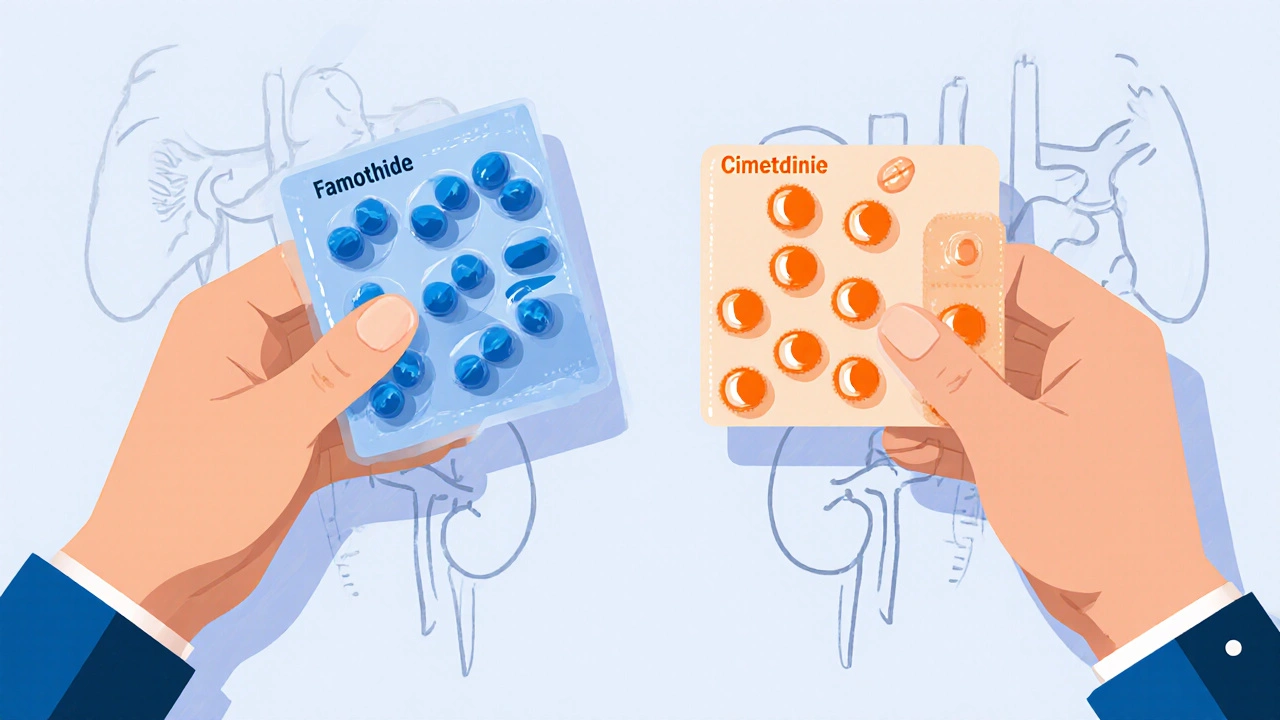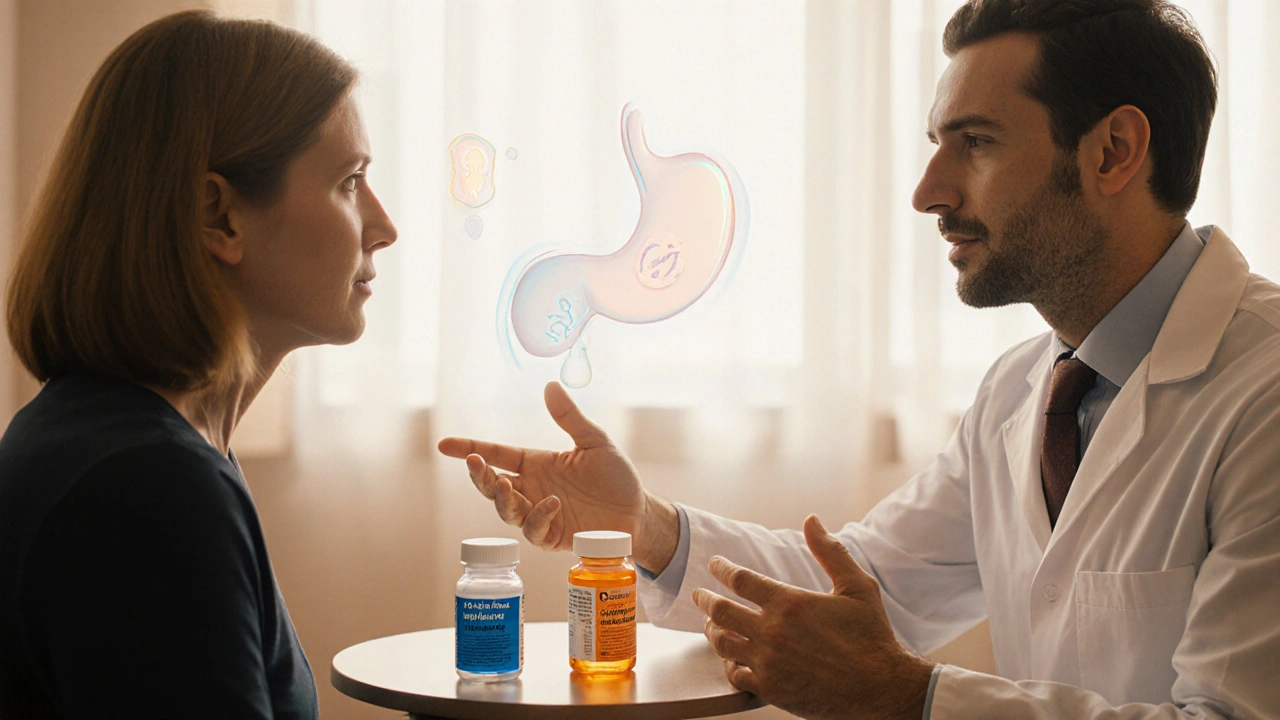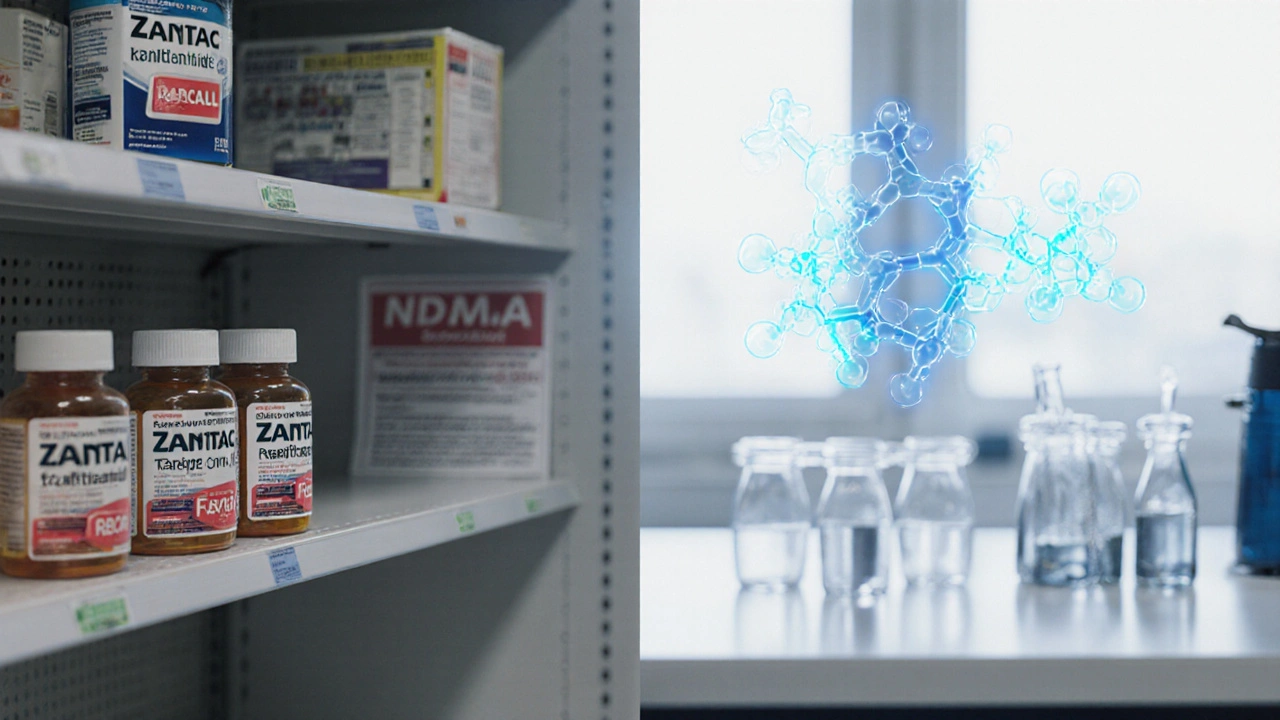Ranitidine vs. Alternatives: Drug Selector Tool
Recommended Treatment Option
Drug Details
Quick Takeaways
- Ranitidine was pulled from the market in 2020 due to NDMA contamination concerns.
- Modern H2 blockers like famotidine and cimetidine remain safe but may be less potent for severe reflux.
- Proton pump inhibitors (PPIs) such as pantoprazole, omeprazole, and esomeprazole provide stronger acid suppression but carry long‑term risk flags.
- Choosing the right drug depends on symptom severity, safety profile, and how quickly relief is needed.
- Talk to a clinician before switching, especially if you have liver disease, kidney issues, or are on multiple meds.
What is Ranitidine?
Ranitidine, sold under the brand name Zantac, is an H2 blocker that reduces stomach acid by blocking histamine H2 receptors on gastric parietal cells. It was introduced in the early 1980s and quickly became a go‑to treatment for heartburn, gastric ulcers, and gastroesophageal reflux disease (GERD).
In 2020 the U.S. FDA issued a worldwide recall after tests revealed the presence of N‑nitrosodimethylamine (NDMA), a probable human carcinogen. All commercial forms of ranitidine were removed from shelves, and the drug is no longer prescribed in the United States or the EU.
Why was Ranitidine withdrawn?
The NDMA issue emerged from instability in ranitidine’s molecular structure under certain storage conditions. When exposed to heat or humidity, ranitidine can break down and form NDMA at levels exceeding the FDA’s acceptable daily intake of 96ng. Independent labs in Europe and Asia reported similar findings, prompting a coordinated regulatory response.
Safety concerns aside, the drug’s efficacy remained solid: a single 150mg dose lowered gastric acidity within 30minutes and lasted 8‑12hours. The withdrawal left a gap for patients who needed quick, moderate acid suppression without the stronger effect (and higher cost) of PPIs.

Modern H2 Blockers: Famotidine and Cimetidine
Both famotidine and cimetidine belong to the same class as ranitidine but have distinct safety and potency profiles.
- Famotidine offers a more predictable pharmacokinetic profile, with minimal drug‑drug interactions. A typical 20mg dose works for 10‑12hours, making it a popular OTC option.
- Cimetidine is less commonly used today because it inhibits several cytochrome P450 enzymes (CYP3A4, CYP2D6). This can raise levels of drugs like warfarin or certain antidepressants.
Neither drug has been linked to NDMA formation, and both remain available in the U.S. market as of 2025.
Proton Pump Inhibitors (PPIs) - The Stronger Alternative
PPIs target the final step of acid production by irreversibly inhibiting the H⁺/K⁺‑ATPase pump in parietal cells. They provide deeper and longer acid suppression than H2 blockers.
The most widely prescribed PPIs in 2025 include:
- Pantoprazole - 40mg daily for GERD; onset 1‑2hours, lasting up to 24hours.
- Omeprazole - often sold as Prilosec; works well for ulcer healing.
- Esomeprazole (brand Nexium) - the S‑enantiomer of omeprazole, offering slightly higher bioavailability.
Although effective, PPIs have been associated with increased risk of bone fractures, kidney disease, and micronutrient deficiencies when used long term. The FDA now requires a boxed warning for chronic use over 8weeks.
Side‑by‑Side Comparison
| Drug | Class | Typical Dose | Onset | Duration | FDA Status (2025) | Common Side Effects |
|---|---|---|---|---|---|---|
| Ranitidine | H2 blocker | 150mg bid | 30min | 8‑12hr | Withdrawn - recall | Headache, dizziness |
| Famotidine | H2 blocker | 20mg qd (OTC) or 40mg bid | 45min | 10‑12hr | Approved | Headache, constipation |
| Cimetidine | H2 blocker | 300mg bid | 45min | 8‑10hr | Approved | Gynecomastia, drug interactions |
| Pantoprazole | Proton pump inhibitor | 40mg qd | 1‑2hr | 24hr | Approved | Diarrhea, abdominal pain |
| Omeprazole | Proton pump inhibitor | 20mg qd | 1‑2hr | 24hr | Approved | Headache, nausea |
| Esomeprazole | Proton pump inhibitor | 20‑40mg qd | 1‑2hr | 24hr | Approved | Flatulence, dizziness |

Pros and Cons in Plain Language
Ranitidine - No longer an option, but historically praised for rapid relief and low cost.
Famotidine - Quick‑acting, low interaction risk, OTC availability. Slightly less potent for severe reflux.
Cimetidine - Comparable potency, but beware of interactions with blood thinners and antiarrhythmics.
PPIs (Pantoprazole, Omeprazole, Esomeprazole) - Best for severe erosive esophagitis and ulcer healing. Require a prescription in most cases, and long‑term use should be monitored.
How to Choose the Right Acid‑Suppressor
- Assess symptom severity. Occasional heartburn (< 2times/week) often responds to an OTC H2 blocker like famotidine.
- Consider timing. If you need relief within an hour, an H2 blocker works faster; PPIs need 1‑2hours to reach full effect.
- Review medical history. Liver disease, kidney impairment, or chronic use of anticoagulants may steer you away from cimetidine or certain PPIs.
- Check medication list. Avoid cimetidine if you’re on drugs metabolized by CYP enzymes; favor famotidine or a PPI with fewer interactions.
- Plan duration. Use H2 blockers for short‑term relief (weeks). Reserve PPIs for longer courses (>8weeks) under a doctor’s supervision.
When in doubt, start with the lowest‑risk option (famotidine) and step up only if symptoms persist.
Frequently Asked Questions
Is it safe to take famotidine after the ranitidine recall?
Yes. Famotidine has no known NDMA contamination, and the FDA continues to list it as safe for over‑the‑counter use. It provides similar acid‑blocking effects with a lower interaction risk.
Can I switch directly from ranitidine to a PPI?
You can, but it’s wise to start with a lower PPI dose and monitor side effects. PPIs are stronger, so some patients experience rebound acid hypersecretion after stopping them.
What’s the difference between omeprazole and esomeprazole?
Esomeprazole is the S‑enantiomer of omeprazole, meaning it’s a slightly different molecular shape that the body absorbs a bit more efficiently. Clinically, the difference is modest, but esomeprazole may work better for patients who didn’t respond to omeprazole.
Do H2 blockers cause vitamin deficiencies?
Long‑term use of PPIs is more strongly linked to low B12 and magnesium levels. H2 blockers have a much weaker effect on nutrient absorption, so deficiencies are rare.
How quickly does famotidine start working?
Famotidine begins to lower gastric acidity within 30‑45minutes, with peak effect around 2hours. It’s a good choice for rapid, on‑the‑spot relief.
Bottom Line
Since the Ranitidine alternatives market has settled, patients now have clear paths: use a low‑risk H2 blocker for mild, intermittent symptoms, or step up to a PPI for chronic or severe disease. Always discuss dosage and duration with a healthcare professional, especially if you have other health conditions. Staying informed about recalls and safety updates helps you avoid unwanted exposure and keep your digestive health on track.


Graham Holborn
Hi, I'm Caspian Osterholm, a pharmaceutical expert with a passion for writing about medication and diseases. Through years of experience in the industry, I've developed a comprehensive understanding of various medications and their impact on health. I enjoy researching and sharing my knowledge with others, aiming to inform and educate people on the importance of pharmaceuticals in managing and treating different health conditions. My ultimate goal is to help people make informed decisions about their health and well-being.